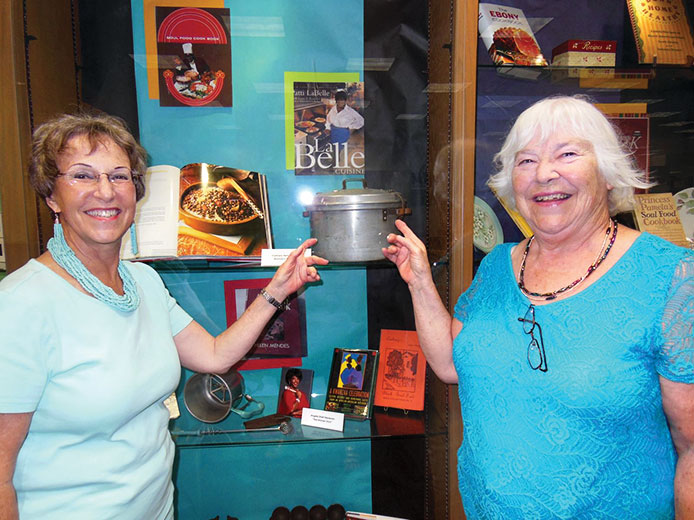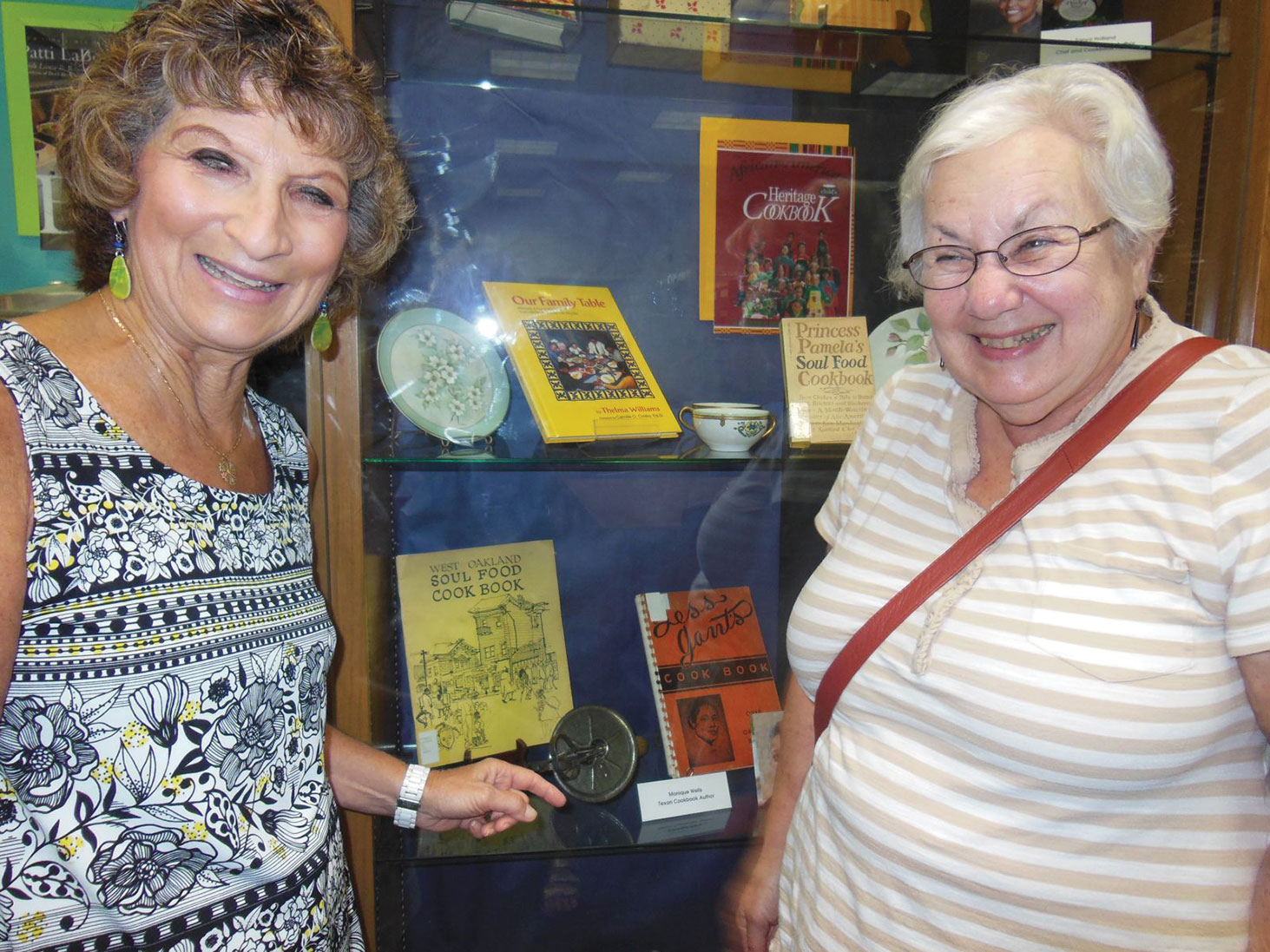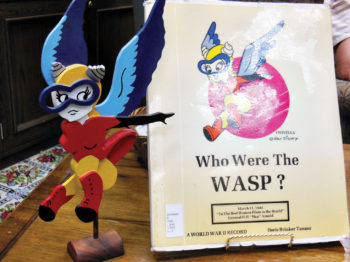
Left to right: Carol Solow and Mary Mullins point to an early pressure cooker.

Kim Johnson, Director of Special Collections

Left to right: Phyllis Ayers and Ilene Schlesinger point to early manual hand mixer.

Life Magazine cover of a WASP Pilot

WASP document
Bernadette Fideli
Until Eve arrived, this was a man’s world, and what a difference she made! The Rockin’ Red Ranchers spent a morning at Texas Women’s University discovering how women transformed the history and culture of Texas. TWU, opened in 1903, is the largest state institution in the country for women and has the largest collection of women’s artifacts in the south. A preeminent research center on women’s history, the Women’s Collection at TWU was established in 1932 and is the oldest in the country. Meeting in the Starbucks located in the stained glass domed library, the Ranchers were greeted by Kim Johnson, Director of Special Collections for TWU. Escorted to the second floor, the Ranchers were exposed to the vast array of collections accessible to the public at no charge. Two special collections were featured. The Culinary History and Cookbook Collection tells the story of communities and their people. They document society’s relationship with food and how culture influences our understanding of one another. Today cookbooks are considered the quintessential history book. How better to learn how pop culture, politics, education and religion influence our society than through food. For example, during WWII cookbooks featured quick and easy recipes requiring few ingredients as women were working in war production plants and rationing was in effect. After the war the cookbooks offered involved recipes and copious aesthetics and etiquette directions since a woman’s place was seen as being in the home. Today the cookbook collection is visited by international historians, and the earliest cookbook dates from 1624. A second collection documented was the WASP Collection: Women Airforce Service Pilots. It is the most extensive archival collection in the United States of “WASP personal papers, photographs and other memorabilia available to researchers. In 1942 two highly experienced and accomplished female pilots, Jacqueline Cochran and Nancy Harkness Love, formed different but complementary flying organizations of women pilots. Their common goal was using women pilots in the war effort to perform ferry, transport, testing and other noncombat flying, which would allow more male pilots to be used for combat duties. On August 5, 1942 the name given to all those women pilots was the name they are known by today, the Women AirForce Service Pilots (WASP). The WASP started out as a ‘guinea pig’ program, get it shut down as quickly as possible. There were 1,102 women who completed the pilot training program in Sweetwater, Texas. Today 100 are still alive. The oldest is 105, and the baby is 95. Kim bid farewell to the Ranchers with a perplexing thought: in today’s digital age, with tweeting and texting, etc. how does one do research and collect permanent records for archives? Who knew a latte could be so informative!
